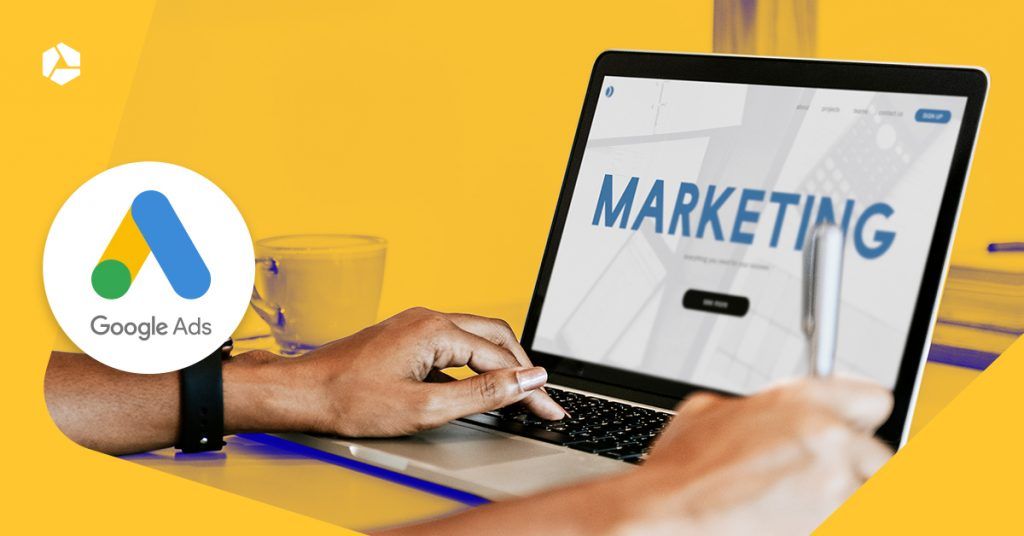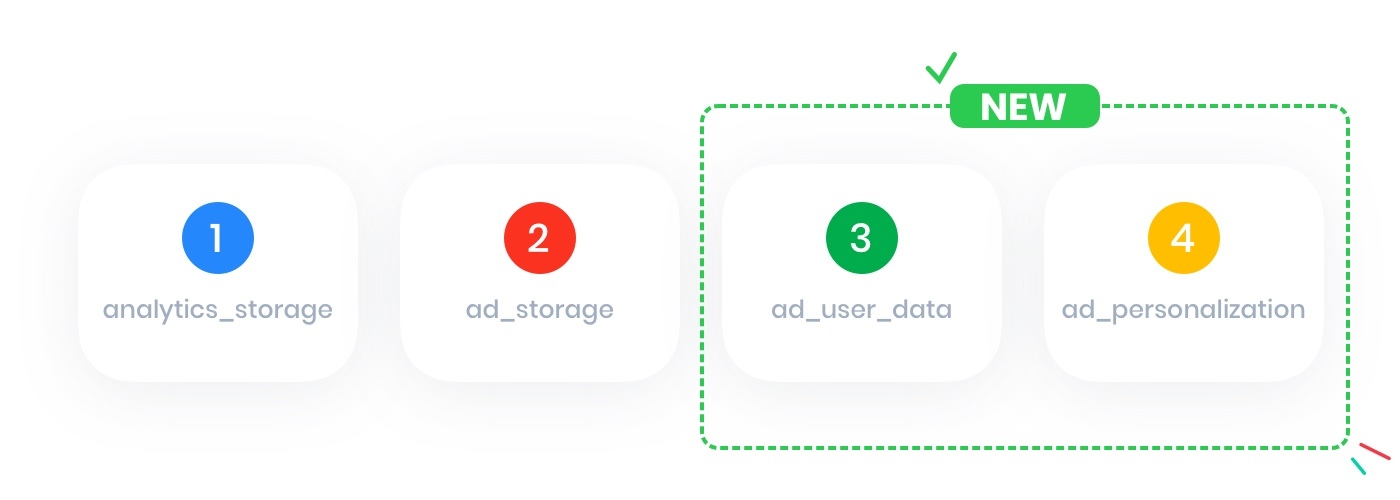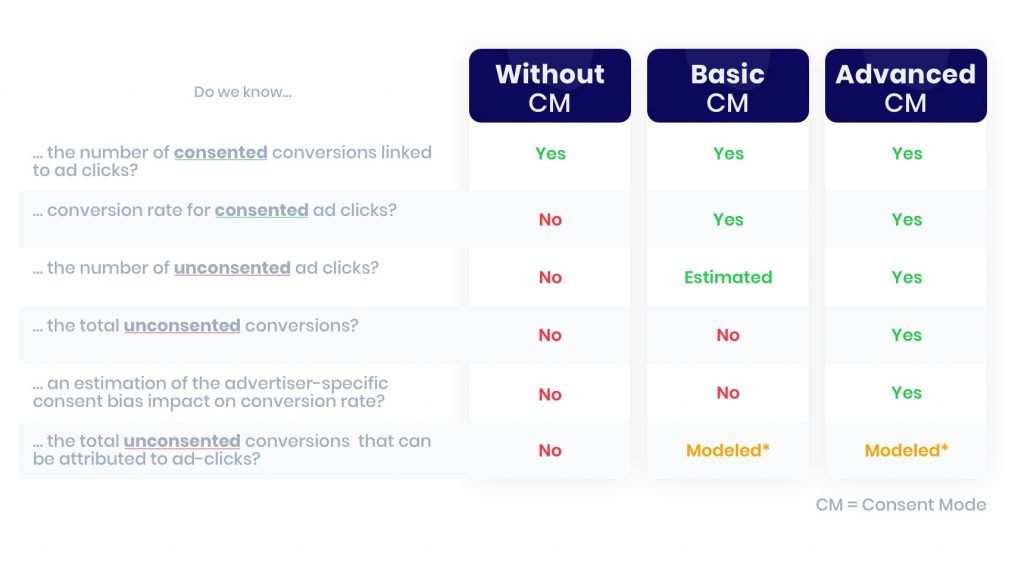Consent Mode v2: how Google’s latest privacy update impacts your digital marketing

If you use Google Ads, pay close attention! Google will be rolling out Consent Mode v2 starting from March 2024. This means there will be much stricter rules for advertising and audience building in Google Analytics.
This new privacy update will have a significant impact on those who advertise through Google. If you don't implement the new version of Consent Mode, you risk losing important customer data. Be prepared!
Consent Mode v2: what's changing
Consent Mode v2 is on its way. While Google hasn't made much noise about it yet, you should dive into Google's new privacy settings as soon as possible.
Starting from March 2024, much stricter rules will apply for those using Google Ads. Advertising and building European audiences in GA4 will be less straightforward. These changes will have a significant impact on both your ongoing and new advertising campaigns.
Responsibility for obtaining user consent
Starting from March 2024, the Digital Markets Act (DMA) will be actively enforced. This law imposes new obligations on large companies, such as Google, which are considered 'gatekeepers.'
A significant change is that this law now holds major companies, like Google, accountable for obtaining user consent (Cookie Consent) associated with their advertising services.
Here's what Google's own team has to say about Consent Mode and the upcoming changes:
This means that a company like Google must have this consent even before they are allowed to offer their core advertising services. Essentially, this means that the responsibility for obtaining this consent now lies more with Google than with the website owner.
In response to this change, Google is expanding their existing Consent Mode to Consent Mode v2.
Two extra parameters
Additionally, Consent Mode v2 introduces two extra parameters to convey the correct consent:

- 'ad_user_data': This is used to determine if the user consents to Google's advertising purposes. When the user actively consents to sharing data with Google via a cookie banner, this is set to 'granted'.
- 'ad_personalization': This parameter controls whether data can be used for advertising personalization, such as for remarketing. It can only be set to 'granted' when users specifically agree, via the cookie banner, to share data with Google for advertising personalization.
Google's Consent Mode v2: you can't do without it
Given that Google cannot ignore the DMA legislation and privacy rules are constantly tightening, launching Consent Mode v2 within your digital marketing strategy is inevitable. Especially if you use Google Ads or other Google advertising services, you need to make the switch.
If you hesitate, your campaigns are likely to suffer. Your results will falter because you may no longer be able to build audiences effectively and track your conversions properly.
Basic and Advanced
That's why it's crucial to understand the difference between Basic Consent Mode and Advanced Consent Mode. These are the two ways to implement Consent Mode.
Your choice depends on the legal framework your company must comply with and your desired outcomes.
How Basic Consent Mode works
In Basic Consent Mode, the Google tag is only activated when the user consents to the use of cookies. If the user declines consent, no tags are activated, and no information is stored.
How Advanced Consent Mode works
This method of requesting consent goes a step further. Advanced Consent Mode is unique because the Google tag is activated even before the user has had the chance to view the cookie banner.
This means that the tags are always activated, even if a user declines consent for the use of cookies.
However, if the user does make a choice, the tags will adjust their 'behavior'. For example, the tag may stop sending cookies or advertising personalization will not be activated. Behind the scenes, there are various parameters, each with its own value, associated with this process.
Attention!
While collecting cookieless pings allows you to model data more accurately and fill gaps of users (who did not give consent) in a more precise manner, this is a highly controversial method of data analysis. There are therefore many doubts about its legality within the EU. Experts therefore advise against using the Advanced Consent Mode.

Switching to Consent Mode v2 without worries
Alright, if we're emphasizing that you should switch to Consent Mode v2, then we should also help you do it. That's a fair deal! 😉
Use the easiest way to implement Google Consent Mode v2
Within our hosting group, Combell partners with privacy tool iubenda. They offer you the easiest way to transition to Google Consent Mode v2. They guarantee the highest quality, just like you're used to with Combell.
Seamless integration
To effectively use the new version of Consent Mode, Google recommends using a certified Consent Management Platform (CMP). In other words, your homemade cookie banners won't cut it anymore.
What is a CMP?
A Consent Management Platform (CMP) is a system that websites or apps can use to manage user consent for things like cookies and trackers in a legal and compliant manner.
When it comes to such a CMP, iubenda is the way to go. They have a Consent Management Platform (CMP) integrated with Consent Mode v2. So, your marketing data won't be lost starting from March 2024.
Moreover, the integration is almost automatic. You don't have to set up everything manually. Everything is simply processed within iubenda's CMP.
Benefits of iubenda's CMP
In addition to seamlessly continuing to use Google Ads, iubenda's smart CMP offers other advantages, elevating your online marketing efforts.
- Get more out of your conversions
Consent Mode v2 restores conversion data for approximately 65% of ad clicks from users who did not give consent. This provides you with modeled conversions and thus more insights into how your ads are performing. This way, you can make the most out of your advertising budget.
- Compliant with GDPR regulations
Obtaining and managing consents via Google Ads and Google Analytics is done without compromising users' privacy. Thanks to iubenda, you remain GDPR-proof at all times.
Make the switch to Consent Mode v2
Continuing to use Google Ads, collecting data, and growing your business... If you leave it all to chance, Consent Mode v2 could seriously disrupt that. It would be a shame after all your hard work!
So, make the switch as soon as possible. Thanks to iubenda, you can do it without stress and hassle! That's pretty great, isn't it? 😉
